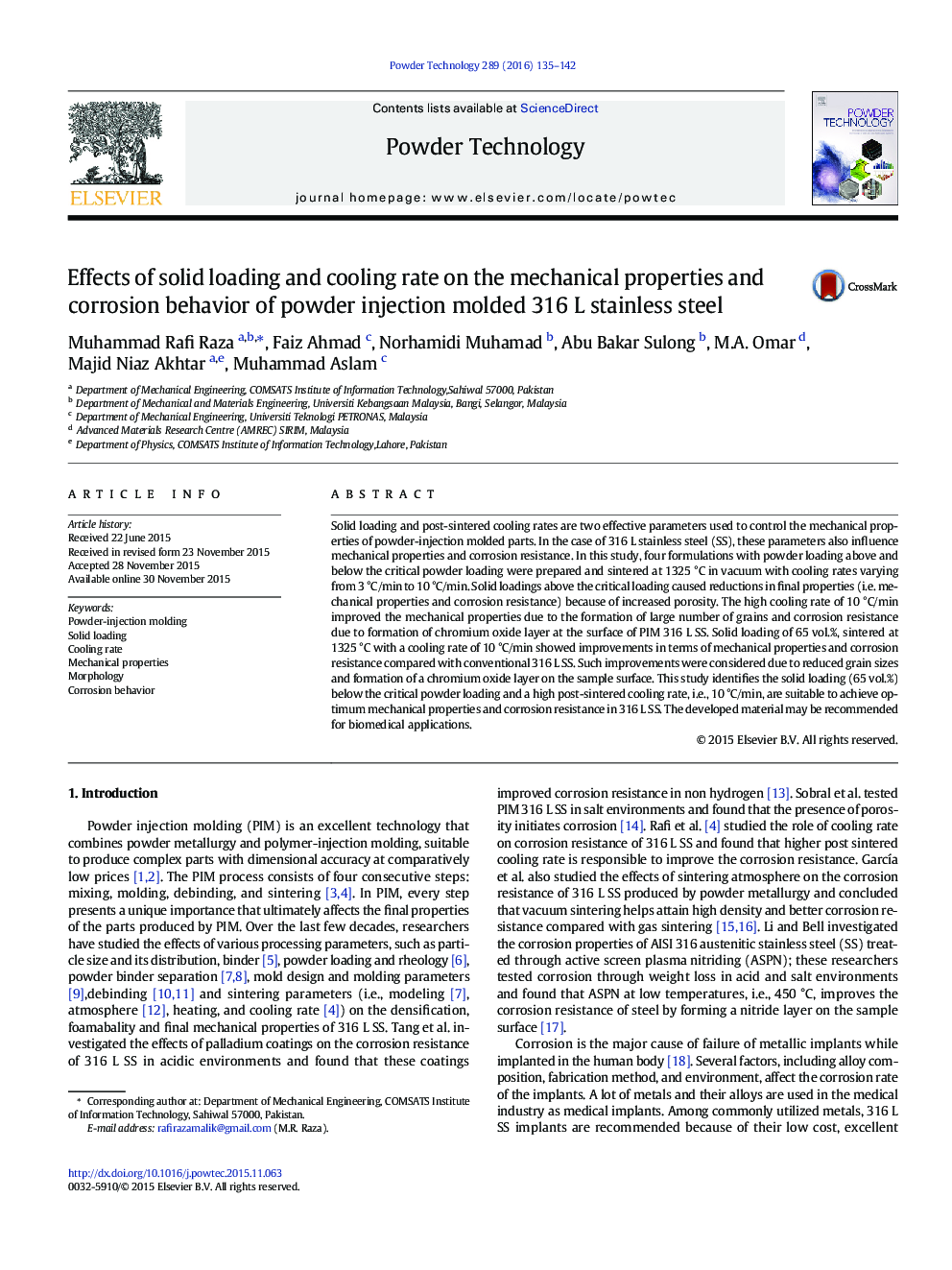| کد مقاله | کد نشریه | سال انتشار | مقاله انگلیسی | نسخه تمام متن |
|---|---|---|---|---|
| 235310 | 465632 | 2016 | 8 صفحه PDF | دانلود رایگان |
• Critical solid loading effects on densification and its role in biocompatibility
• Linkage between PIM process parameters and its effects on sintered properties of 316 L stainless steel.
• Effects of post cooling rate on formation of biocompatible oxide layer (Cr3O2) and to avoid the carbide formation.
• Relationship between Sintering temperature and evolution of corresponding microstructures.
Solid loading and post-sintered cooling rates are two effective parameters used to control the mechanical properties of powder-injection molded parts. In the case of 316 L stainless steel (SS), these parameters also influence mechanical properties and corrosion resistance. In this study, four formulations with powder loading above and below the critical powder loading were prepared and sintered at 1325 °C in vacuum with cooling rates varying from 3 °C/min to 10 °C/min. Solid loadings above the critical loading caused reductions in final properties (i.e. mechanical properties and corrosion resistance) because of increased porosity. The high cooling rate of 10 °C/min improved the mechanical properties due to the formation of large number of grains and corrosion resistance due to formation of chromium oxide layer at the surface of PIM 316 L SS. Solid loading of 65 vol.%, sintered at 1325 °C with a cooling rate of 10 °C/min showed improvements in terms of mechanical properties and corrosion resistance compared with conventional 316 L SS. Such improvements were considered due to reduced grain sizes and formation of a chromium oxide layer on the sample surface. This study identifies the solid loading (65 vol.%) below the critical powder loading and a high post-sintered cooling rate, i.e., 10 °C/min, are suitable to achieve optimum mechanical properties and corrosion resistance in 316 L SS. The developed material may be recommended for biomedical applications.
Figure optionsDownload as PowerPoint slide
Journal: Powder Technology - Volume 289, February 2016, Pages 135–142
